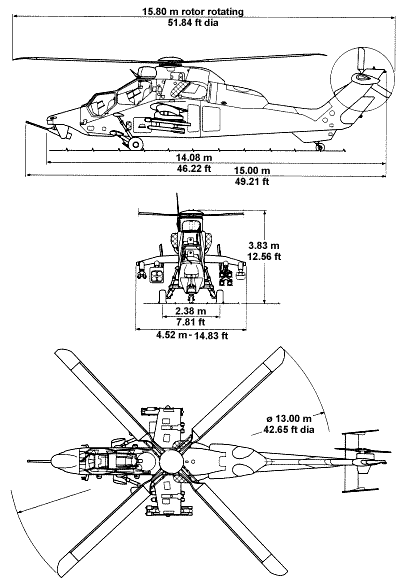WR-6 Champion

- Production cost: $29.6 million (USD)
- Price: $47.1 million (USD)
Specifications
Primary Function
- Attack helicopter
Builder
Power Plant
- 2 Norton Power G-RW-32 gas turbine engines
Length
- 14.7 meters (rotor turning)
Width
- 12.1 meters (rotor turning)
Speed
- 322 km/h (Cruise)
- 351 km/h (Maximum)
Range
- 485 km
Weight
- 3,736 kg (Empty)
- 4,950 kg (Combat Mission)
Crew
- Two
Armament
- 23mm turreted gun.
- New generation short range air-to-air missiles.
- Advanced air-to-ground missiles and rockets.
- Active/passive Electronic Warfare (EW) systems.
- Internal and external reconnaissance systems.
Mission Equipment
- Centralized processing architecture with Ada software
- Target acquisition system with aided-target detection/classification and automatic target tracking
- Night vision pilotage system, wide field-of-view (35°x52°) helmet-mounted display
The WR-6 Champion was Wingarde’s first rotary-wing aircraft project. The first prototype was manufactured in 2001, and went through an extensive series of quality and performance tests over the next two years. It entered active service around the same time as the WF-33 Avenger, in mid-2003.
Equipped with the latest avionics systems and state-of-the-art weapons, the Champion proved to be a deadly fighting machine, specialized in the elimination of armored vehicles and destruction of heavy fortifications. Nevertheless, the helicopter performs remarkably well against other ground targets. However, its ability to engage fast, non-rotary-wing aircraft is somewhat limited due to the inherent restrictions of this type of vehicles.
